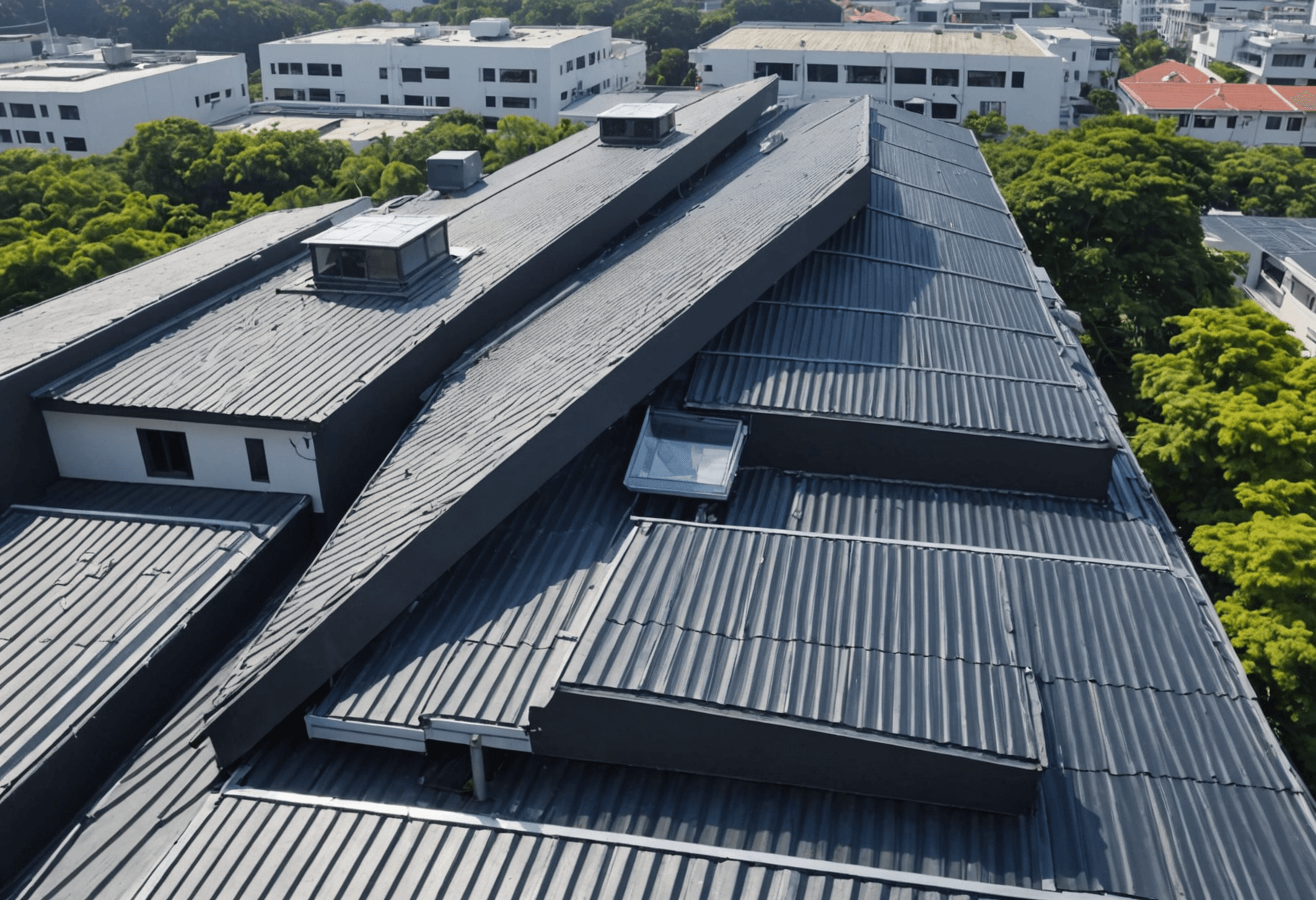The Environmental Impact of Roofing Choices in Singapore

Choosing the right roofing material in Singapore is more than just improving your home’s aesthetics or protecting it from the elements. As environmental awareness grows, homeowners and builders alike are increasingly considering the ecological footprint of their roofing choices. In a city known for its tropical climate and urban density, making eco-friendly decisions can contribute significantly to reducing energy consumption, waste, and overall environmental impact.
From the materials used to their lifecycle and recyclability, every decision connected to roofing carries implications for Singapore’s urban environment. This article will explore how different roofing options influence the environment, offering practical insights and actionable tips to help you make more sustainable choices for your home or commercial property.
The Environmental Footprint of Common Roofing Materials in Singapore
Asphalt Shingles
Asphalt shingles are popular for their affordability and ease of installation. However, their manufacturing process involves petroleum, a non-renewable resource, contributing to greenhouse gas emissions. Additionally, asphalt shingles often end up in landfills after their lifespan, taking centuries to decompose and releasing toxins into the environment.
Metal Roofing
Metal roofs, made from materials like steel or aluminum, are highly durable and recyclable. They reflect sunlight, reducing the heat absorbed by buildings, which can lower energy use for air conditioning. When properly maintained, metal roofs can last 50 years or more, minimizing waste over time. Recycled content in metal roofing also helps reduce raw material extraction.
Clay and Concrete Tiles
Traditional clay and concrete tiles are often chosen for their aesthetic appeal. They have a long lifespan but require significant energy to produce, especially in clay manufacturing. Their weight necessitates sturdy support structures, potentially increasing the environmental impact of installation. Nevertheless, their durability means fewer replacement cycles and less waste.
Green Roofs and Living Roofs
Green roofs involve cultivating plants atop roofing structures, providing insulation, reducing stormwater runoff, and absorbing carbon dioxide. While initial installation may be more costly and resource-intensive, their environmental benefits over time outperform traditional options by contributing to urban cooling and biodiversity.
Energy Efficiency and Roofing Choices
The type of roof you select directly impacts energy consumption in Singapore’s hot and humid climate. Light-colored or reflective roofing materials, known as cool roofs, can significantly decrease indoor temperatures and reduce air conditioning needs. According to studies, cool roofs can lower urban temperatures by up to 1.5 degrees Celsius, helping to mitigate the city’s heat island effect.
Implementing Solar Panels on Your Roof
Integrating solar photovoltaic panels with your roofing system offers a renewable energy source that reduces dependence on fossil fuels. Modern solar tech is lightweight and compatible with various roofing materials. Although initial costs may be high, the long-term savings and environmental benefits are substantial. Before installing, ensure your roof can support the weight and consult with professionals for optimal positioning.
Sustainable Practices for Roofing Maintenance and Disposal
Proper maintenance extends the lifespan of your roof, decreasing the frequency of replacements and reducing waste. Regular inspections, cleaning, and timely repairs prevent leaks and structural damage. For properties in Singapore, maintaining waterproofing layers is crucial to prevent water infiltration and damage.
When it’s time to replace a roof, consider recycling options or eco-friendly disposal methods. For example, metal roofing materials can often be recycled. Also, some local waste management companies partner with recycling facilities to process roofing debris responsibly. If you’re experiencing issues with roof leaks, for example, water infiltration contributing to structural problems, consult local experts like https://waterleakage.sg/ for sustainable repair solutions that minimize environmental impact.
The Benefits of Choosing Environmentally Friendly Roofing in Singapore
- Reduced energy consumption: Reflective and insulated roofs help keep interiors cooler, decreasing air conditioning use.
- Lower carbon footprint: Using recyclable materials and renewable energy sources diminishes overall emissions.
- Enhanced urban sustainability: Green roofs promote biodiversity and help mitigate the urban heat island effect.
- Longevity and durability: Longer-lasting roofs generate less waste and require fewer resources over time.
Additional Tips for Environmentally Conscious Roofing in Singapore
- Opt for locally sourced materials: Reduces transportation emissions and supports local industries.
- Choose recycled content products: Many metal and roofing materials contain recycled materials, decreasing environmental impact.
- Invest in insulation: Proper insulation works synergistically with reflective roofs to further reduce energy use.
- Conduct regular inspections: Detect issues early to extend the roof’s lifespan and prevent unnecessary replacements.
Conclusion
Making environmentally friendly roofing choices in Singapore not only benefits the planet but also enhances the comfort and efficiency of your property. By understanding the impact of different materials, investing in energy-efficient solutions like cool roofs and solar panels, and adopting sustainable maintenance practices, homeowners and builders can play a part in creating a greener urban environment.
Being mindful of your roof’s environmental impact has long-term advantages that go beyond immediate cost savings. It contributes to Singapore’s commitment to sustainability and helps build resilient communities. If you’re unsure of the best options for your property or need professional assistance with waterproofing and repairs, consider reaching out to local specialists who prioritize eco-friendly practices. Remember, responsible roofing choices today pave the way for a more sustainable Singapore tomorrow.

